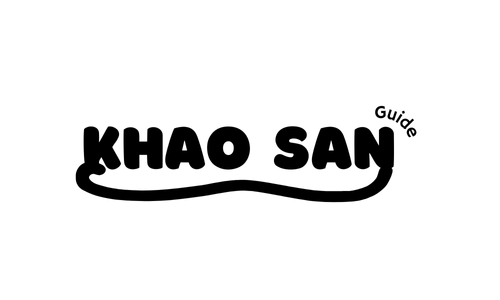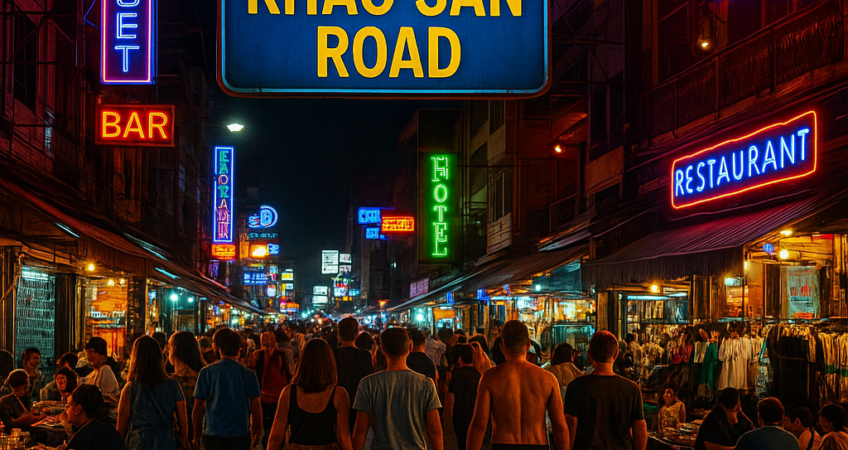Khao San Road is a vibrant and bustling destination in Bangkok that’s a must-visit for backpackers, history enthusiasts, and culture seekers. This 410-meter-long street has transformed from a humble rice trading hub to an iconic global hotspot attracting travelers from around the world. But beyond the neon lights and energetic crowds lies a story steeped in history, culture, and evolution.
If you’ve always thought of Khao San as just a lively backpacker mecca, think again. This guide will take you through the fascinating history of Khao San Road, its cultural significance, and why it continues to captivate visitors today.
The Origins and Historical Significance of Khao San Road
From Rice to Revolution
Did you know that Khao San Road was originally a rice trading hub? Constructed in 1892 during the reign of King Rama V, the street’s name “Khao San” translates to “milled rice,” representing its historical roots as a booming rice market. By the late 19th century, it had become the largest rice trading center in Bangkok. Its proximity to the Chao Phraya River and local canals made it an important location for transporting goods, cementing its place as a vital artery of commerce in Siam (now Thailand).
Khao San Road as a Reflection of Change
Over time, Khao San transitioned alongside Bangkok’s urban development. Though its essence as a trade center persisted for decades, the late 20th century brought a shift. With the rise of tourism during the 1960s and 70s, backpackers following the famous Hippie Trail began to use Bangkok—and Khao San—as a gateway to Southeast Asia.
One crucial moment that accelerated Khao San’s transformation was Bangkok’s bicentennial celebration in 1982. With hotels across the city fully booked, local residents opened their homes as temporary lodging for travelers. These informal accommodations soon evolved into guesthouses, cementing Khao San’s place in the hearts of budget-conscious explorers.
Khao San Road: A Backpacker’s Utopia
For backpackers, Khao San Road is a rite of passage. Over the decades, it has earned its reputation as a “backpacker ghetto” owing to its affordable lodging, eclectic food options, and budget-friendly shopping. But it’s more than just a cheap place to stay; Khao San thrives on an atmosphere where cultures and stories collide.
- Accommodations: From modest hostels to mid-range hotels, the choices are endless for those looking for budget travel options.
- Street Food: Here, you’ll find everything from spicy Thai pad thai to fried scorpions—a true feast for curious taste buds.
- Nightlife: Khao San Road after sunset transforms into an energetic hub of music, dancing, and camaraderie, with its pubs and bars drawing travelers of all backgrounds.
Cultural and Social Impact of Khao San Road
Counterculture and Creativity
During the late 1970s and early 1980s, Khao San became a bohemian haven for free thinkers, creatives, and university students. Nearby schools like Silpakorn University drew young minds to the area, adding to its liberal and artistic vibe.
Khao San’s international fame soared even further when the film The Beach, starring Leonardo DiCaprio, hit theaters in 2000. Though the film only briefly mentioned the road, it painted Khao San as an exotic, carefree destination, drawing even more intrepid travelers to experience it for themselves.
An Economic Driver
Beyond tourism, Khao San Road significantly contributes to Bangkok’s economy and cultural prestige. It remains a vibrant melting pot where locals and visitors engage, exchange, and thrive together.
Transformation of Khao San Road Over the Years
Modernization
Khao San Road has seen extensive changes in infrastructure and operations. Efforts to improve cleanliness and regulate vendor activities have turned part of the street into a pedestrian-friendly “walking street” during peak times.
Pandemic Challenges
The COVID-19 pandemic temporarily quieted the lively street, highlighting its reliance on international tourism. However, Khao San’s resilience shone through as local authorities and businesses worked towards revitalizing it for a post-pandemic world.
Tips for Travelers Visiting Khao San Road
If Khao San Road is on your travel list, here’s what you need to know to make the most of your visit:
- Pack Light: Navigating the crowds is easier with a small travel bag.
- Try Local Delicacies: Keep an open mind—whether it’s creamy mango sticky rice or grilled insects, there’s something for everyone.
- Stay Nearby Attractions: Use Khao San Road as a base to explore gems like the Grand Palace and Wat Phra Kaew.
- Bargain Smartly: Vendors expect you to haggle, but always do so with a smile.
- Pick the Right Time: Visit early in the evening for food and shopping or at night for upbeat music and nightlife.
The Future of Khao San Road
Balancing Chaos and Charm
Khao San Road is at a crossroads. Local authorities aim to preserve their charm while addressing issues like overcrowding and sanitation. Projects to enhance its appeal, such as dedicated pedestrian zones and revamped vendor spaces, are underway.
A Global Icon Forever
Khao San Road’s ability to evolve while retaining its quintessential spirit ensures its allure for generations to come. Whether you’re drawn by its history, its culture, or its bustling nightlife, Khao San remains proof of Bangkok’s unique dynamism.
Why Khao San Road Will Always Be Special
Khao San Road’s story is one of transformation. From its beginnings as a humble market to its current status as a global hotspot, it encapsulates the evolution of Bangkok itself. Its lively atmosphere, rich history, and welcoming community make it a must-visit for backpackers and seasoned travelers alike.
Have you visited Khao San Road before? Share your favorite memories in the comments below!



